
Exploring Mexico’s Best National Parks and Biosphere Reserves
Exploring Mexico’s Best National Parks and Biosphere Reserves
With 41 Biosphere Reserves and 67 National Parks, Mexico makes an excellent option for nature and adventure lovers.
And who doesn’t love to observe animals in their natural habitat and be part of the beautiful landscapes that Mother Nature gives us every day?
Visiting a Reserve or Natural Park makes us feel more relaxed and connected with nature.
I selected the 17 most famous National Parks and Biosphere Reserves in Mexico, so you don’t miss the opportunity to visit them and at the same time support ecotourism. Vamonos!
17 Best National Parks and Biosphere Reserves in Mexico
1. Ría Celestún Biosphere Reserve, Yucatan Mexico
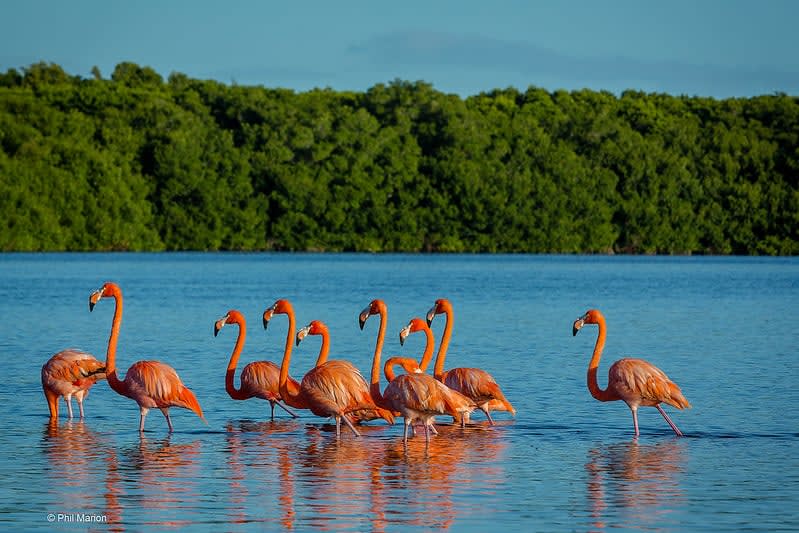
This beautiful reserve is in Yucatan, on the border with Campeche.
One of the reserve’s main attractions is bird watching since many migratory species come here to rest, feed, and reproduce, especially the pink flamingo.
In addition to the flamingos, there are about 290 species of birds, both forest birds such as woodpeckers, hummingbirds, and motmots, as well as aquatic birds.
The reserve is at the mouth of Yucatan’s most important subway water basin, which coincides with the Cenotes ring and the Ria Lagartos.
Likewise, it is located within the coastal corridor of wetlands with the best conservation of the western part of the peninsula.
You can stay inside the reserve, enjoy the incredible sunrises and sunsets, and practice activities such as bird watching.
Another cool thing you can do here is participate in turtle release, explore the mangroves, swim in cenotes, and fish with the locals.
2. Sian Ka’an Biosphere Reserve, Quintana Roo Mexico
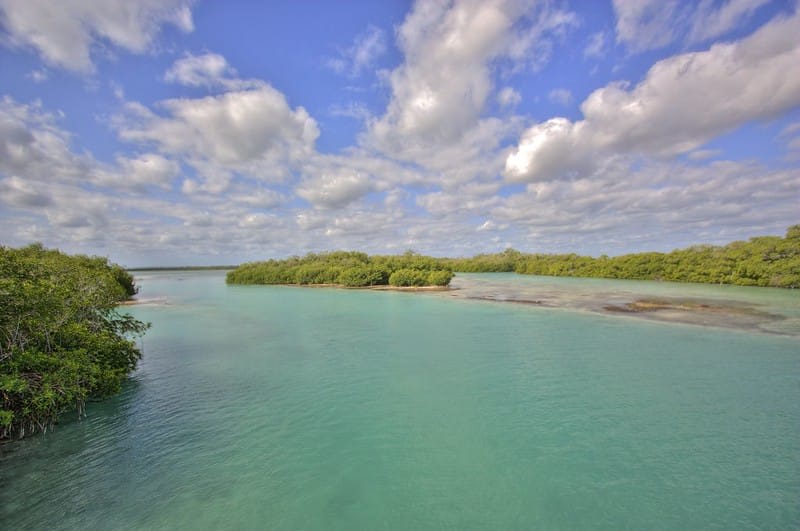
Sian Ka’an, translated from Mayan, means “Place where the Sky is Born,” for a good reason.
The Sian Ka’an Biosphere Reserve sits on the coasts of Quintana Roo, next to Tulum.
Its name coincides with its incomparable beauty, characterized by abundant vegetation of about 800 flowers and plants.
Followed by a fauna where over 100 mammals and 345 bird species found their habitat, jungle, coral reefs, and mangroves. All this makes Sian Ka’an an enchanting place.
In this reserve, you can observe wild species such as tapirs, manatees, jaguars, toucans, turtles, dolphins, crocodiles, pumas, monkeys, and pink flamingos many others.
There are also 23 archaeological sites of the Mayan culture, among which Tulum and Muyil stand out.
3. Hierve el Agua Oaxaca

Hierve el Agua has consistently been recognized as the probable sacred place of the ancient Zapotecs in Oaxaca.
Its beauty is due to the natural contrast, as it is in the heart of a mountain range, and two impressive petrified waterfalls offer the main attraction.
The first is 30 meters high, and the second of approximately 12 meters. It is worth mentioning that it is an exceptional place.
The waterfalls were formed by the runoff of carbonated water from the springs located at the top of the rocks.
From these springs, water is projected over the formations, thus creating new layers that are projected into a ravine 200 meters deep that, seen from above, is a landscape that will leave you speechless.
On the site, you will find a series of small natural pools excavated in an esplanade called “The Amphitheater.”
From there, you can admire the waterfalls perfectly. You can also swim and enjoy the gorgeous views of the Oaxacan Valley.
4. Xcalak Reefs: One of the best Marine National Parks in Mexico
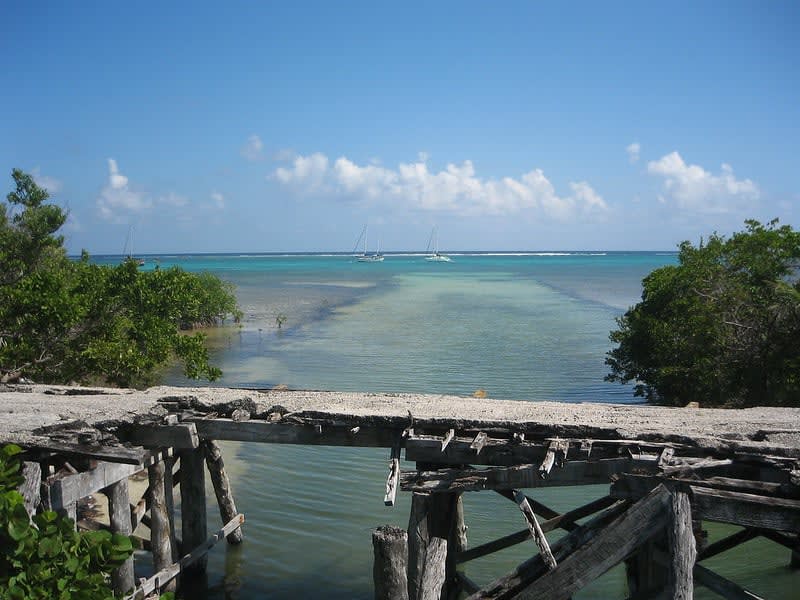
This Marine Natural Park is in the south of Quintana Roo, Mexico.
It is part of the coral reef known as “Mesoamerican Barrier Reef System,” considered the second largest barrier reef in the world.
In Xcalak, you will find great marine diversity and beauty, making it a unique destination for ecotourism lovers since the area is perfect for scuba diving, fishing, snorkeling, and kayaking.
Although it is one of the oldest communities in southern Quintana Roo, it is still a virgin destination on the Mayan coast.
Xcalak is a place with lush vegetation, which increases its ecotourism attraction and is the refuge of various endemic species such as manatees.
Hundreds of bird species have made this place their home, and many dolphins also frequent it. Can you imagine?
5. Sima de las Cotorras in Chiapas Mexico
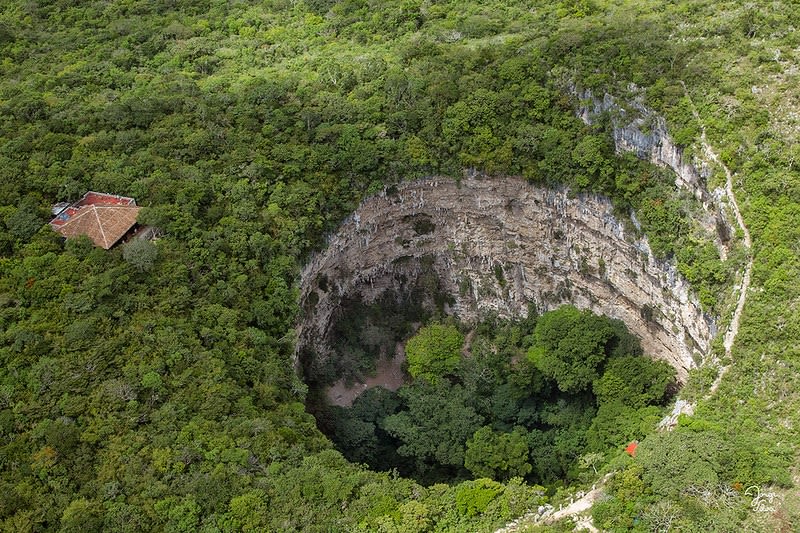
In this natural reserve, you can observe a giant sinkhole where parrot families live in the trees at the bottom of the chasm.
It is an excellent place to witness these exotic birds’ arrival and departure and explore and practice ecotourism activities.
In the Sima de las Cotorras, you will find vestiges of the Zoque culture, represented by cave paintings.
Some of these paintings are up to 10,000 years old, while the most recent could be around 1000.
All are evidence of the technical capabilities of the people who made them descend the walls and capture these paintings.
You can also practice rappelling, hiking, external and internal tours, rest in an ecological cabin, taste a good dish of the Chiapaneca gastronomy, and observe regional flora and fauna.
6. Nevado de Toluca: One of the highest National Parks in Mexico
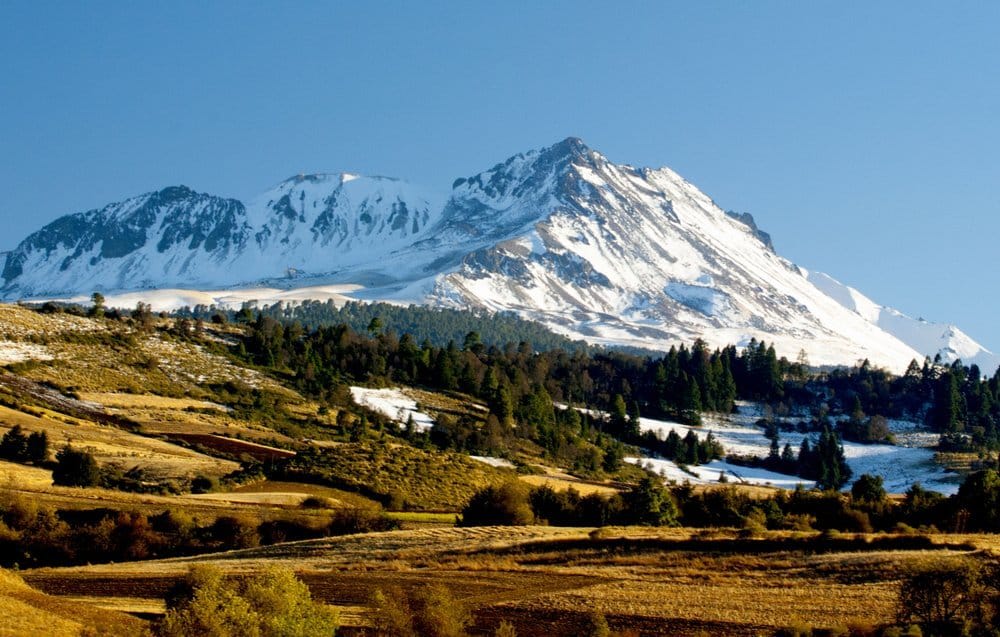
This National Park in the State of Mexico has an extension of over 50,000 hectares.
It is populated by great vegetation of pines, cedars, and firs.
For mountain sports lovers, the park has other elevated hills:
- Cacalotepec, 3580m
- La Calera, 3640m
- San Antonio, 3700m
- Volcan Gordo, 3790m
One of the most impressive views is the one formed by the peak of El Aguila and El Capitan in front of the lake of El Sol.
It has the greatest depth, hundreds of meters, and transparent waters with beautiful greenish tones, contrary to the lake of La Luna with blue tones.
Surrounded by an extensive forest and countless trails for walking, quad biking, horseback riding, or cycling will be an unforgettable experience.
On the other hand, it has two alpine lodges, trails to the crater, areas with barbecue grills, and spaces for camping.
7. Sumidero Canyon: One of the most visited National Parks in Mexico
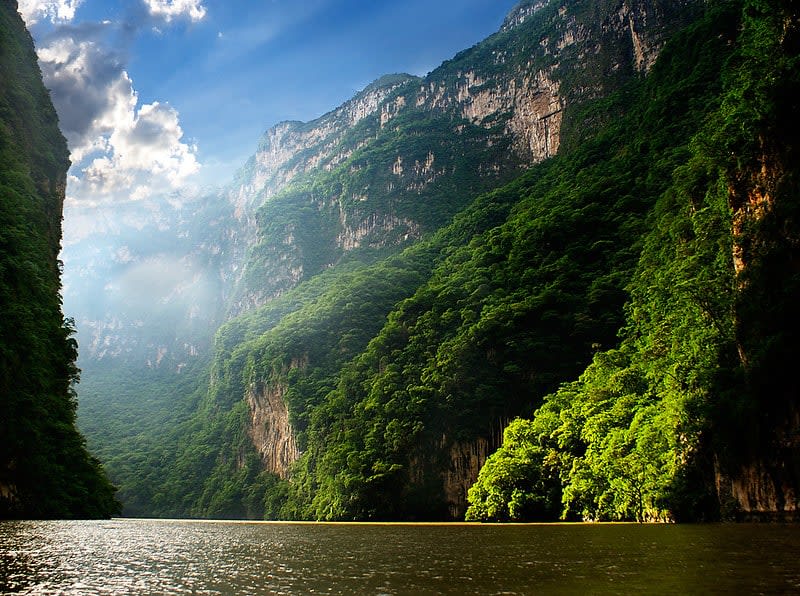
Among the jungle and hidden in a beautiful landscape is the Sumidero Canyon, where the spider monkey, anteater, and Great Curassow, among other species, have their habitat.
In this place, you can also enjoy the view offered by its viewpoints, which have facilities for camping or a picnic.
There is a very traditional way to tour the Sumidero Canyon. It is a round trip to the Chicoasén dam, about 30 km from Chiapa de Corzo.
The canyon crossing is one of the most spectacular in Mexico.
Caves and waterfalls are in vertical walls like the one called “Christmas Tree.” Crocodiles can be observed on the river banks.
The Canyon began to form around 70 million years ago, thanks to the action of the movements called Horts-Graben.
Fifteen million years ago, the marine waters withdrew from this region due to the geological movements that formed the mountains, among them those of the Sumidero Canyon, which began to suffer water dissolution and erosion.
8. Desierto de Los Leones National Park
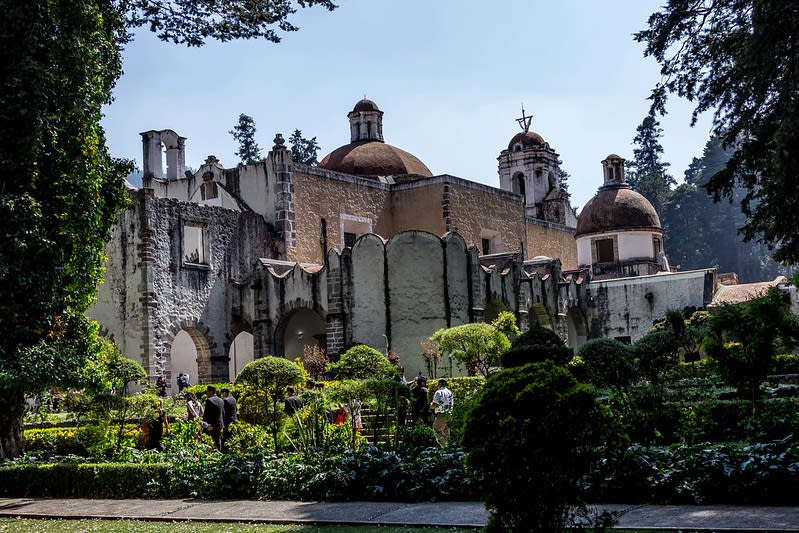
Declared a National Park on November 15, 1917, the Desierto de Los Leones is a forest that attributes its name to the silence perceived in the place, ideal for spiritual retreats.
It was chosen in the 17th century by the Order of Discalced Carmelites to found their convent, formerly called “Santo Desierto de Nuestra Señora del Carmen de Los Montes de Santa Fe.”
This park is southwest of Mexico City, has a semi-cold, cloudy climate with rain in the summer, and is rich in oyamel, ash, and oak trees.
Visitors usually appreciate it for recreational and cultural events, races, and ecological marathons, besides being one of the most essential “lungs” for the Valley of Mexico.
9. Iztaccíhuatl Popocatépetl National Park
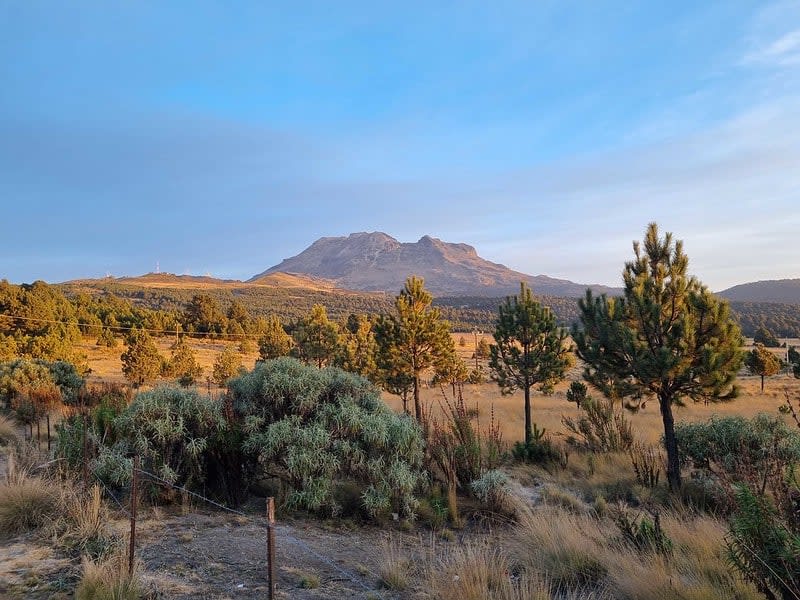
Located on the border of the states of Mexico, Puebla, and Morelos, this park protects nearly 40,000 hectares surrounding Mexico’s second and third-highest peaks.
It is recognized for its outstanding biodiversity and the richness of its ecosystems, which provide environmental services, fauna, vegetation, and minerals exploited by the inhabitants.
Historically, it is known that in the valleys surrounding these mountains, the indigenous groups domesticated plants such as corn, squash, beans, chili, and amaranth.
Furthermore, it is also an important reservoir of fungi species and wild flora and fauna, with at least 19 endemic specimens.
10. Vivero Coyoacan National Park (Plant Nursery Coyoacan)
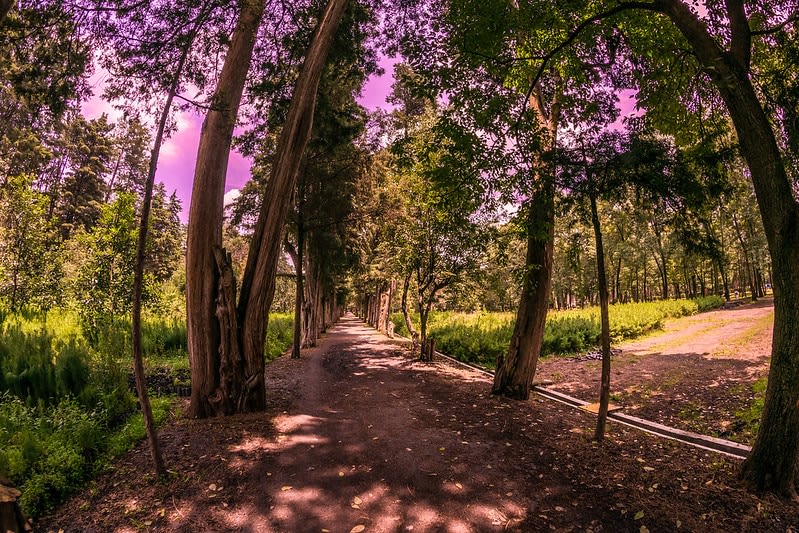
The federal government manages the Vivero Coyoacán National Park through Semarnat (Mexico’s Secretariat of Environment and Natural Resources).
Its goal is to donate trees to reforest the entire Mexico City metropolitan area.
The 38 hectares green enclosure reached its current extension by adding part of the San Pedro Mártir hacienda and land sold by local inhabitants.
Read more about things to do in Coyoacan
It was the first forest reserve destined to propagate arboreal species for local reforestation and public and private gardens.
Former president Lázaro Cárdenas declared it a National Park in 1938.
11. La Malinche or Matlalcuéyatl National Park
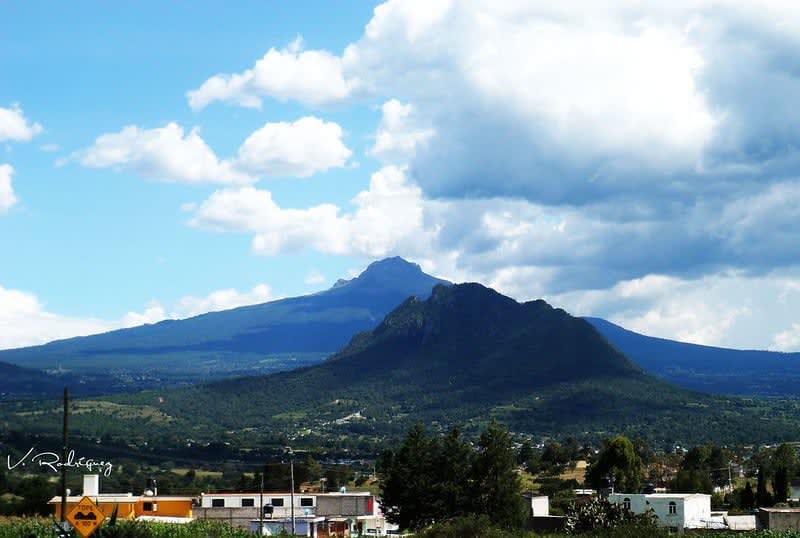
This beautiful place lies in the states of Tlaxcala and Puebla and 16 municipalities in the Transversal Neovolcanic Axis.
There is a great diversity of fauna, with at least 938 described species, and it is home to the fifth-highest peak in Mexico, the volcano La Malinche.
Its most representative vegetation includes algae mountain forests with oaks, oyamel, grasslands, and induced vegetation (crops).
People visit for recreational purposes, sports training, and practice ecological activities, such as mountain biking, camping, and mountaineering.
12. Sierra de San Pedro Martir
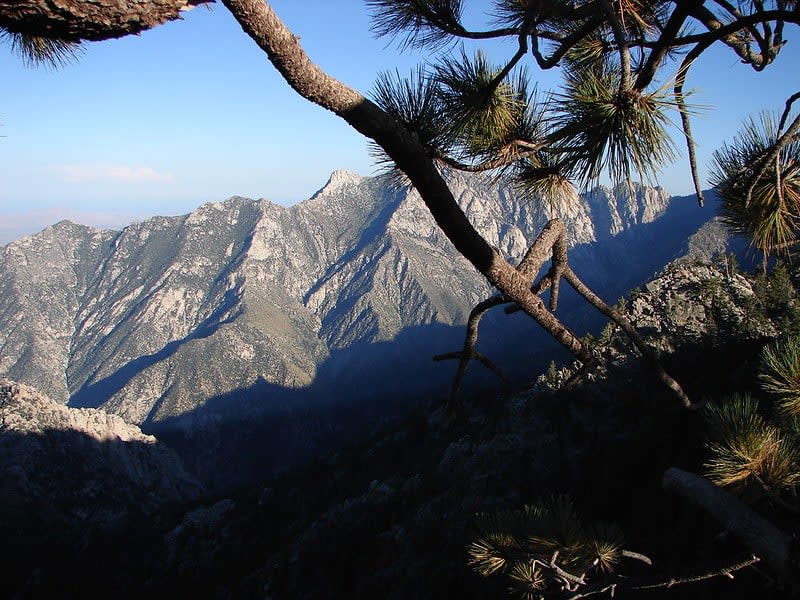
In addition to their rich biodiversity and ecosystems, National Parks in Mexico are also places of observation and scientific research because of their natural qualities.
Such is the case of the Sierra de San Pedro Martir National Park, where the National University of Mexico installed the Astronomical Observatory in 1971 due to the area’s clarity and good atmospheric conditions.
This park is home to essential forest reserves with ecosystems of chaparral, pinyon pine forest, and mixed coniferous forest, in addition to being home to fauna such as:
- Pumas
- Wildcats
- Bighorn sheep
- Coyotes
- Badgers
- Foxes
Furthermore, the Sierra de San Pedro Martir is part of the Action Program for the Conservation of the California Condor Species, which has had outstanding success.
13. Cabo Pulmo National Park in Baja California Sur, Mexico
Of course, National Parks are limited to terrestrial areas and include the wealth under the sea.
This is why important sites with mangroves and seagrasses have also been considered, where incredible biodiversity coexists, such as Cabo Pulmo National Park, in Los Cabos, Baja California Sur.
Due to the nature of its ecosystems, this destination also has international awards, such as the RAMSAR site (2008) and World Heritage Site (2005).
Ecotourism and sports activities are carried out on its coasts, in addition to appreciating species that come to its shores, such as sharks, manta rays, jacks, and whales.
14. Loreto Bay National Park
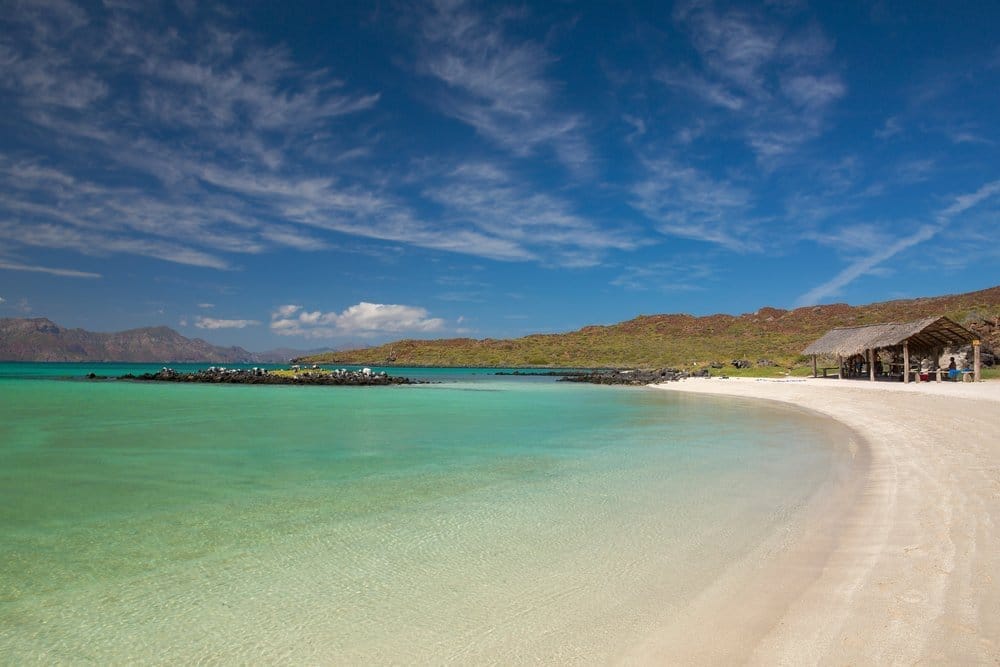
The richness of this National Park in the municipality of Loreto, Baja California Sur, lies among its five majestic islands full of biodiversity.
In addition, its waters are the ideal place to see the largest mammal in the world, the shark whale, and other species such as the humpback whale, orcas, dolphins, sea lions, and birds.
Although the climate is dry and semi-arid with little rainfall in summer, the average temperature is 24 ºC, which is ideal for many visitors for sport fishing, diving, snorkeling, and outdoor activities such as hiking and camping.
15. Lagunas de Zempoala National Park near Mexico City
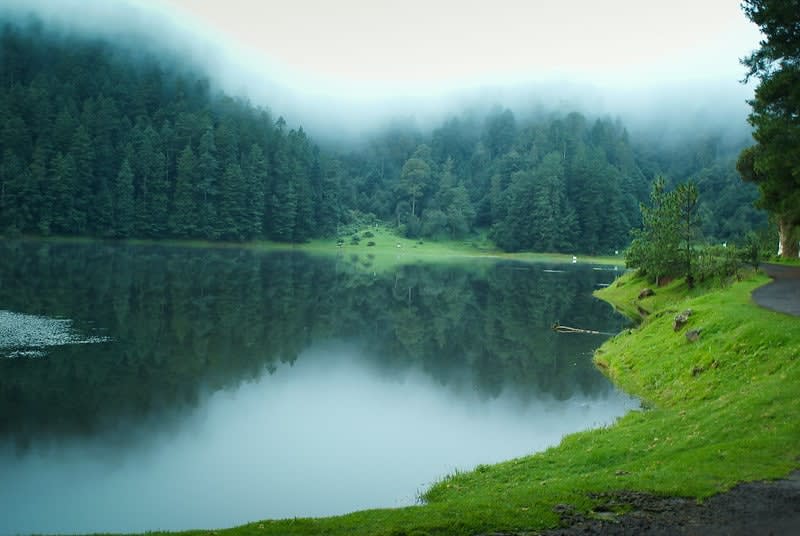
One of the many beautiful ecosystemic treasures of the Central and Neovolcanic Axis is located between Morelos and Mexico on more than 4,700 hectares.
You will find forests of pine, oak, subalpine grassland, and aquatic vegetation, as well as a great variety of fauna, much of which is endemic and microendemic.
There is a water catchment, oxygen generator, and carbon sequestration.
In addition to providing an attractive landscape and ecotourism recreation, with activities such as hiking, camping, and observation of flora and fauna, Zempoala offers several environmental services.
It is a source for preserving culture through its villages where many Mexican traditions, such as the Day of the Dead, are jealously guarded.
16. Tulum National Park

The Tulum National Park houses plenty of jungle ecosystems, wetlands, coastal dune vegetation, beaches, and cenotes, where many flora and fauna species representative of the region develop.
Tulum it’s one of the favorite places for sea turtles between May and November.
Along its extension are the archaeological zones of Tulum, Muyil, Xelá, Xcaret, Playa del Carmen, and Cobá.
Hence it offers a great variety of tourist services to appreciate nature and enjoy the relics of the ancestral cultures that inhabited the Yucatan peninsula.
17. The Marietas Islands in Riviera Nayarit, Mexico

The Islas Marietas, declared a Natural Protected Area on April 25, 2005, is located in the Riviera Nayarit, in the heart of Banderas Bay.
This stunning site comprises two islands: Isla Larga and Isla Redonda.
“Las Marietas” hosts 93 bird species, including the world’s largest breeding colony of the Brown and Blue Booby, and protects various species of flora and fauna, both terrestrial and marine.
I hope you enjoyed this article, and maybe you can visit any of these amazing places on your next trip to Mexico.
Don’t forget to share your comments below or contact me with any questions. Vamonos!
Best National Parks and Biosphere Reserves in Mexico: Conclusion
As you’ve seen today, Mexico is home to some of the world’s most stunning and diverse national parks and biosphere reserves.
From the tropical forests of the Sierra Gorda Biosphere Reserve to the breathtaking land and ocean views of Cabo Pulmo, there is something for everyone to enjoy.
These protected areas offer a chance to experience Mexico’s natural beauty and play a crucial role in preserving its unique ecosystems and biodiversity.
By visiting and supporting these national parks and biosphere reserves, we can help ensure their continued preservation for future generations.
So, whether you’re a nature lover, an adventurer, or simply looking for a peaceful getaway, Mexico’s national parks and biosphere reserves are worth a visit. Vamonos!